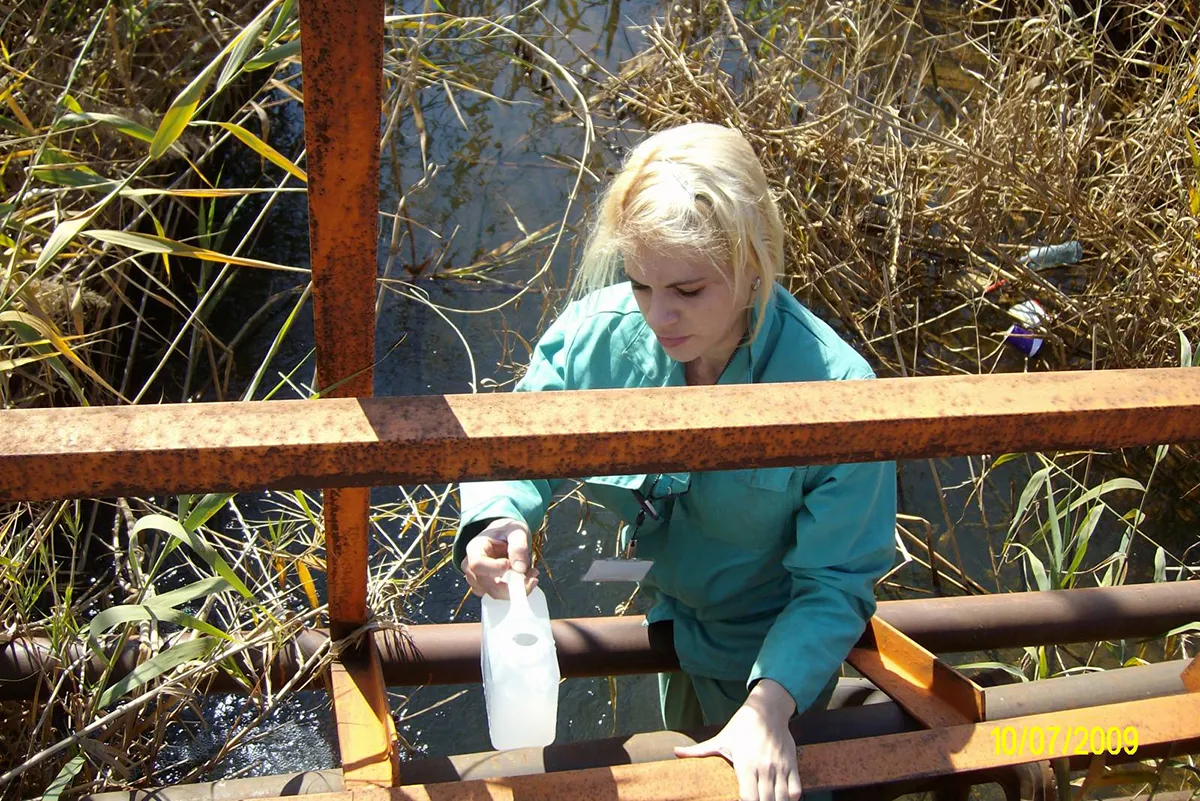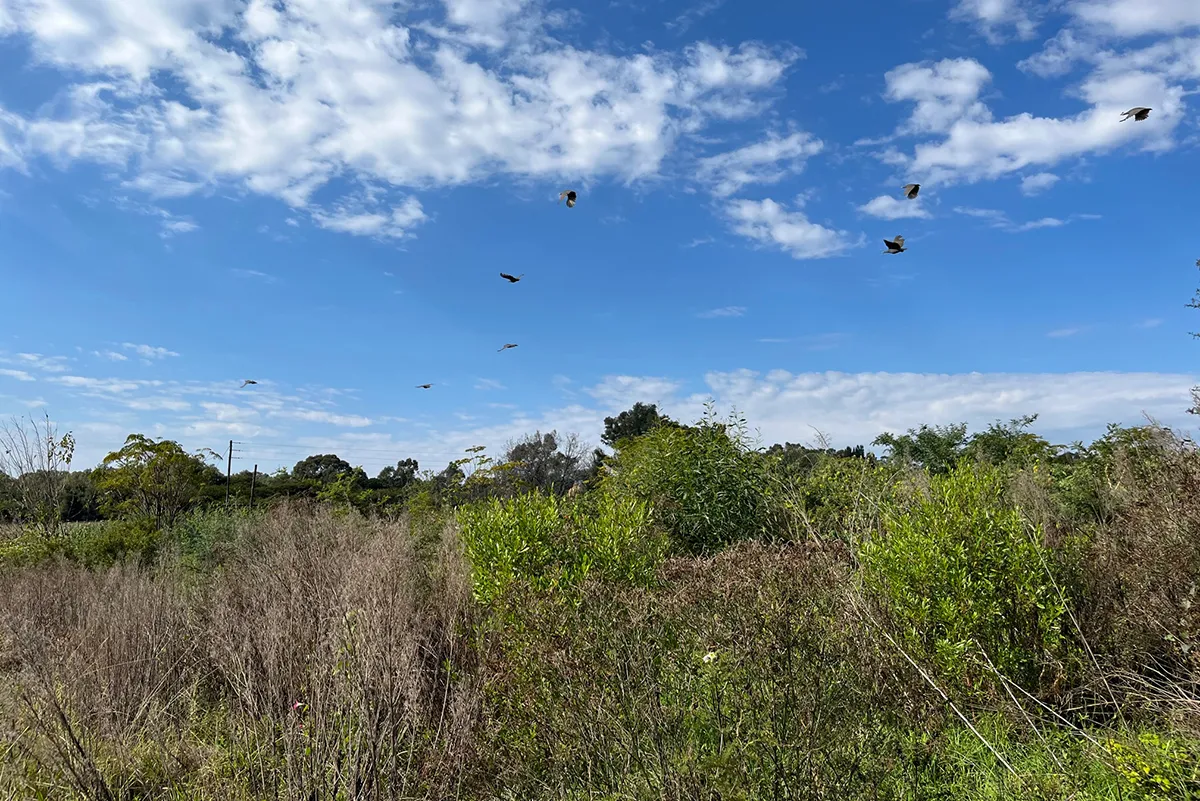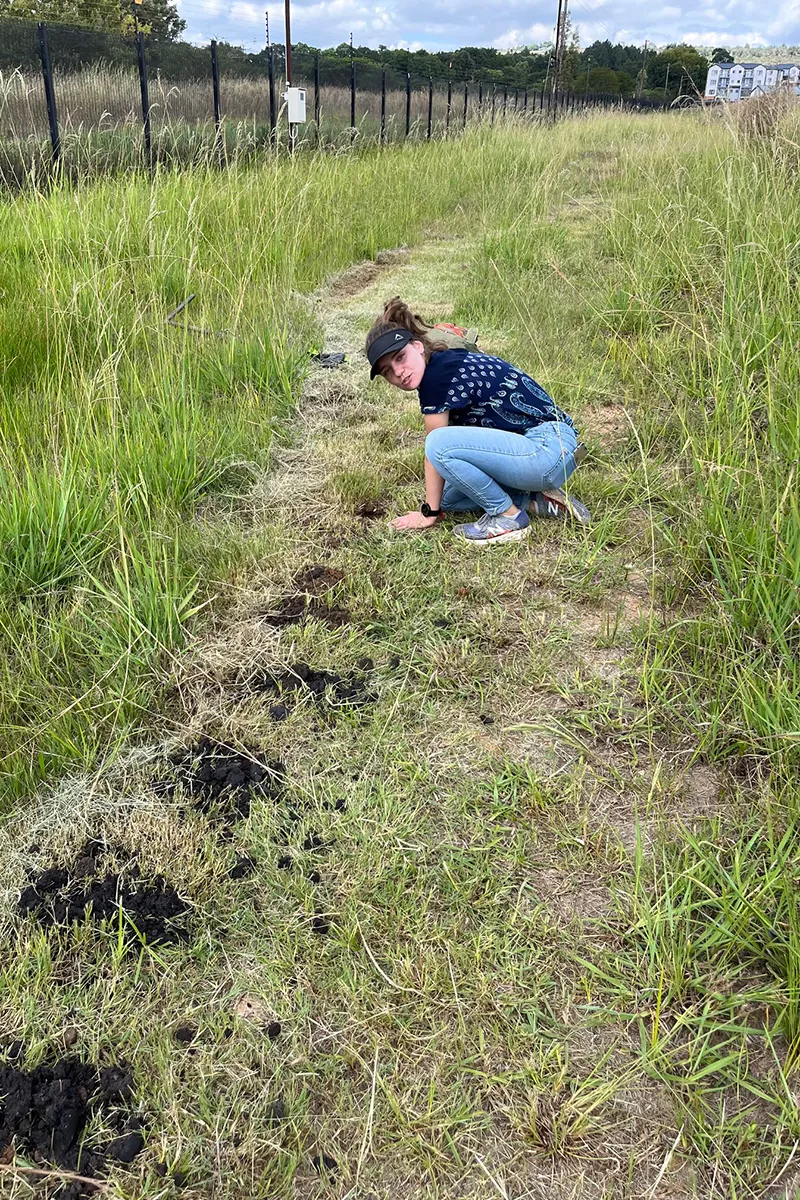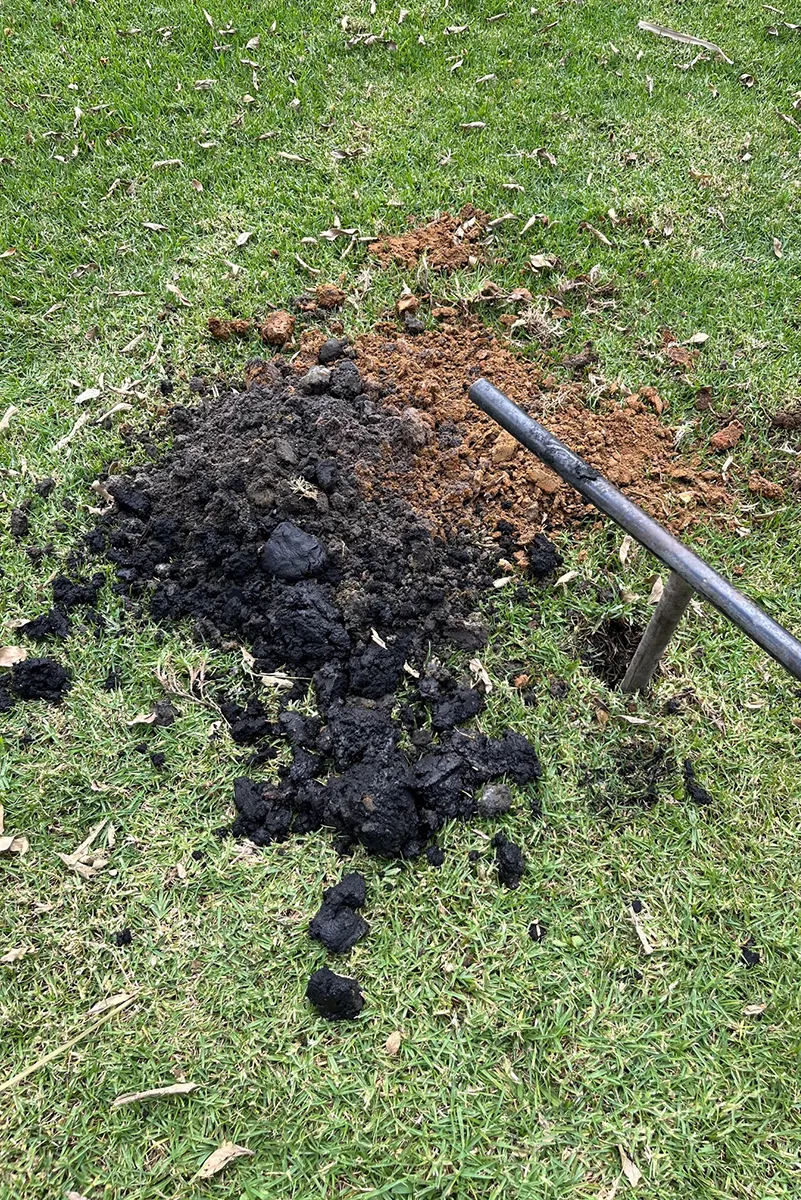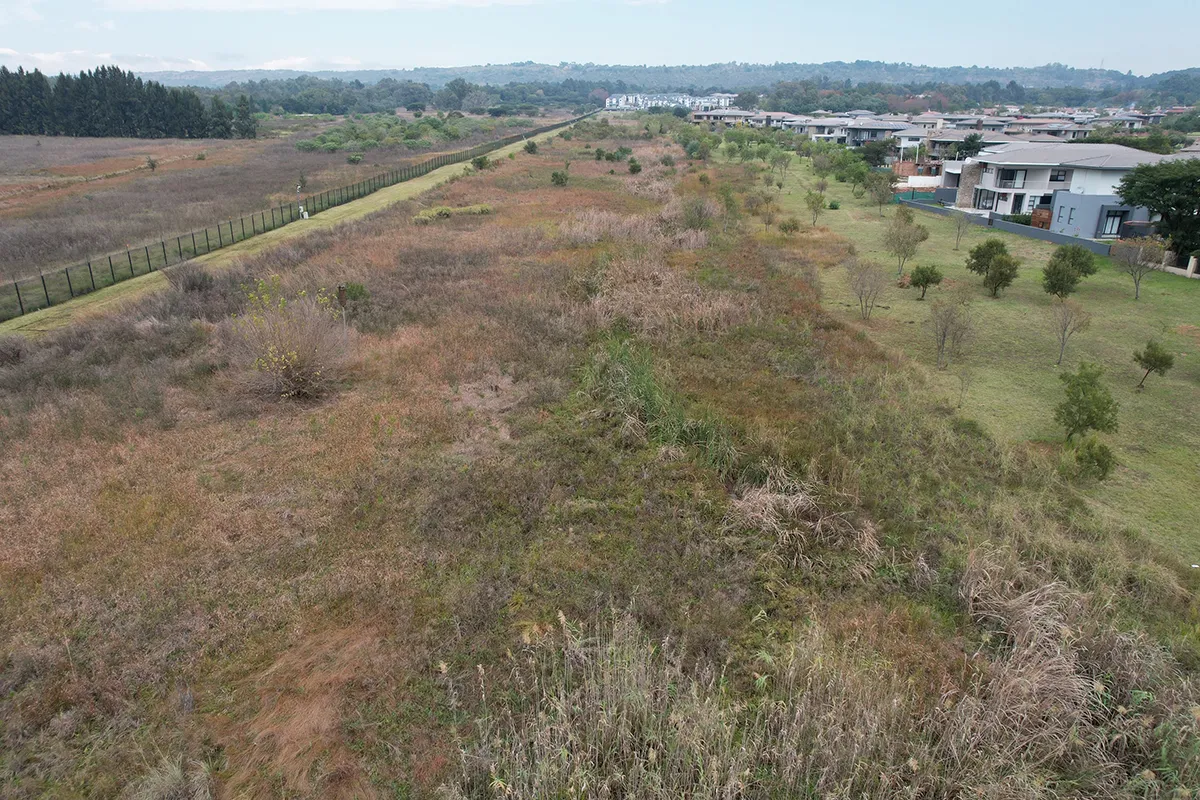Benefits of Urban Greening
Harnessing the Power of Plants
The initiative is a fusion of scientific rigour and innovative urban planning, aimed at nurturing a nature-centric urban landscape. This transformative project is built on a robust scientific foundation, highlighting the potential of natural ecosystems to bring many benefits to our city.
Built on extensive research, our initiative capitalises on the capacity of functioning and connected ecosystems to enrich urban environments. Studies consistently underscore the positive impact of biodiversity on urban resilience, air and water quality, and overall quality of life. Research further highlights that integrating natural areas and green infrastructure mitigates the urban heat island effect, curtails pollution and enhances residents’ wellbeing.
Our project champions an innovative model revolutionising urban landscapes into nature-affirming ecosystems. This design incorporates green infrastructure, rewilding strategies and sustainable urban planning, all guided by scientific insights. This visionary concept reimagines Pretoria East as a region where nature harmonises with urban life, bolstering resilience against climate change, fostering economic sustainability and elevating liveability.
At the forefront of urban innovation, we are committed to deploying cutting-edge technologies for natural area monitoring and management. These solutions provide real-time data, informing adaptive management practices that keep our city at the vanguard of urban sustainability.
In essence, our initiative envisions a future where scientific evidence guides a city that thrives symbiotically with nature. Our vision is not just bold; it sets a pioneering archetype for a future where urban development and nature are indelibly interwoven, assuring a sustainable, resilient and flourishing urban milieu for posterity.
Delivering Multiple Benefits
Our initiative maximises the potential of plants and ecosystems, yielding multiple benefits integrated into local policy and planning. Supported by governance and political stakeholders, it builds on trials initiated in 2014, furthering its nature-based impact on our city.
The initiative harnesses ecosystem functioning to deliver a range of benefits. Through strategic green infrastructure integration, we enhance urban biodiversity, elevating air and water quality, while mitigating the urban heat island effect, ultimately improving residents’ quality of life. Simultaneously, our rewilding and ecosystem regeneration efforts bolster resilience against climate change and act as a natural buffer against extreme weather.
The initiative’s core can be intricately woven into local policy and planning. It also enables the attainment of goals concerning the Kunming-Montreal Global Biodiversity Framework.
Our nature-based approach garners unwavering support from governance and political bodies. Our journey towards a nature-oriented urban landscape began with the 2014 trials, laying the initiative’s foundation. These early trials yielded crucial insights, enabling us to refine our approach and gain support from local stakeholders. They provided proof of concept, showcasing the feasibility and benefits of nature-based systems in our city.
In summary, our initiative optimises plant and ecosystem potential, aligns seamlessly with local policy and planning, enjoys robust governance and political backing, and traces its roots to transformative trials initiated in 2014.
The City’s Bold and Innovative Vision
Our initiative envisions a city where nature and urban life thrive together, charting a path toward a sustainable and resilient future. What makes our approach distinctive is its comprehensive and innovative nature.
At its core, our initiative is a testament to innovative urban planning and sustainable development. It integrates techniques like green infrastructure, rewilding and sustainable land use, grounded in scientific evidence. By reimagining the urban landscape as a nature-positive ecosystem, we have redefined the way urban development interacts with the natural world, fostering urban resilience, sustainability and enhancing liveability.
Our initiative pioneers a funding model through public-private partnerships, community engagement and international cooperation, ensuring long-term financial sustainability. It sets a precedent for economically viable environmental stewardship.
What sets our initiative apart is its holistic and interconnected delivery process. We adopt a systems thinking approach, addressing the water-climate-food-rewilding-land nexus, ensuring a profound and lasting impact on the city’s overall wellbeing.
We are breaking new ground in urban development by integrating innovative techniques, pioneering a unique funding model, and adopting a holistic delivery process. Setting a precedent for urban development prioritising nature, sustainability and resilience while showcasing the potential for international cooperation in addressing global urban challenges.
Partnerships and Collaboration
As part of a greater project, our initiative thrives on collaborative working across disciplines and sectors, nationally and internationally as a key factor that distinguishes it as a groundbreaking model for urban development.
We recognise that urban challenges demand a multifaceted approach. Therefore, we have fostered collaborations with stakeholders from diverse fields.
Ecological engineers have played a vital role in our water management strategies, ensuring efficient rainwater harvesting and wastewater treatment within the urban ecosystem. Social science professionals have been actively engaged in promoting physical and mental wellbeing by prescribing “nature prescriptions” to residents who can now access green spaces easily.
Planners have helped shape our sustainable land use policies, ensuring that urban development aligns with ecological preservation. Architects have lent their expertise to design green buildings that harmonise with the natural environment, promoting energy efficiency and a connection to nature. Artists have contributed to the aesthetic aspects of green spaces, creating installations that inspire and educate.
Sociologists have studied the social dynamics of our initiative, highlighting its positive impact on community cohesion and wellbeing. These collaborations transcend traditional boundaries, enriching the initiative’s holistic approach.
Our initiative is a testament to the power of collaboration across disciplines and sectors. It exemplifies a new way of doing things, where professionals from various backgrounds work synergistically to create a sustainable and nature-positive urban environment that benefits all residents.
Addressing Urban Challenges
The Issue
Ecosystem connectivity and community wellbeing are two significant challenges faced by our city. Addressing them is pivotal for a sustainable future.
Pretoria East’s natural landscapes have been increasingly fragmented by urban development, roads and infrastructure, disrupting the connectivity of vital ecosystems. This issue poses a significant problem as it threatens biodiversity, hinders species migration and disrupts the balance of local flora and fauna. Without intervention, this challenge could persist and worsen, leading to a loss of biodiversity, decreased ecosystem services and increased vulnerability to climate change impacts.
The wellbeing of our urban population is another pressing challenge. Rapid urbanisation and a lack of ecologically connected green spaces have contributed to stress, mental health issues, and reduced overall quality of life for residents. The problem is widespread and affects the city’s residents across various demographics. Without addressing this issue, the city could see a decline in community wellbeing, increased healthcare costs, and decreased social cohesion, all of which negatively impact urban liveability and resilience.
If our initiative were not implemented, these challenges would persist and exacerbate. Ecosystem connectivity would continue to degrade, leading to imbalances in local ecosystems and reduced ecosystem services like clean air and water. The community’s wellbeing would decline further, causing a strain on healthcare services and lowering the overall quality of life in the city. By addressing these challenges through our nature-oriented initiative, we aim to create a city where ecosystems thrive and residents enjoy improved well-being, thereby ensuring a sustainable and resilient future for all.
The Impact of the Issue
The severity of the issues addressed by our initiative cannot be overstated. Ecosystem connectivity and community wellbeing are critical factors impacting the lives of citizens, businesses and the natural environment in Pretoria East.
The fragmentation of ecosystems within the city has led to a loss of biodiversity and disrupted critical ecological processes. Species are struggling to adapt to changing conditions, resulting in imbalances and vulnerabilities. The severity of this issue is evident in the declining populations of indigenous species and vegetation types, reduced soil fertility and increased susceptibility to invasive species. Without intervention, the ecological fabric of our city would continue to unravel, affecting pollination, water purification and overall ecosystem health.
The impact on community wellbeing is equally severe. Limited access to ecologically connected and functional spaces and a disconnect from nature have taken a toll. For instance, there is an inability of ecosystems to deal with extreme weather events which can lead to sewage impacts.
Our initiative leverages the power of plants and functioning ecosystems to address these challenges comprehensively. By restoring ecosystem connectivity through green corridors and rewilding efforts, we are revitalising the natural systems that support life and deal with impacts in the city. Simultaneously, we aim to create ecologically functioning systems, promote physical activity and improve water quality to enhance community wellbeing. The severity of these problems necessitates an integrated approach that uses nature as a solution to create a better future where both the environment and residents thrive.
A Nature-Orientated Future
??
Nature Positive Solutions
Implementation
Our initiative is currently in early stages, primarily focused on understanding the baseline ecological conditions and conducting trials of nature-based solutions. While we have not fully implemented the initiative’s comprehensive plan, we have made significant strides in setting the foundation for its success.
Over the past five years, our efforts have been primarily directed toward establishing a thorough understanding of our city’s ecological components. We have conducted extensive ecological assessments, mapping critical habitats in areas and identifying key biodiversity hotspots. These assessments serve as a crucial baseline for measuring future progress.
In tandem with ecological assessments, we have initiated trials of nature-based solutions. These trials involve testing various green infrastructure techniques, rewilding efforts, and sustainable land use practices to assess feasibility and impact. While the trials are ongoing, we hope to observe promising results, such as improved soil quality, increased vegetation cover and the return of indigenous species over the long term.
Our global collaboration with stakeholders from various disciplines, including ecological engineers and other professionals, has been pivotal in laying the groundwork for future implementation. These collaborations, including the citizen science component, ensure that our initiative is aligned with local policies and planning mechanisms.
Although our initiative has not yet achieved its ultimate goals, it is already addressing the city’s challenge by building essential knowledge, fostering collaboration and providing initial evidence of the potential of nature-based solutions. As we move forward, we are committed to translating findings and trials into concrete actions that will deliver a nature-positive outcome.
Feasibility
Our initiative is well on the way to garner significant support, both financially and logistically, which demonstrates its feasibility and potential for long-term success. We are in the process of securing commitments from local government agencies, private businesses and community organisations to provide ongoing support, ensuring the initiative’s sustainability.
These partnerships not only provide the necessary resources but also reflect a shared commitment to the project’s success. Moreover, our innovative funding model, which engages the community and international cooperation, reinforces our financial feasibility. We work closely with the University of the Free State regarding the impact outcome and sustainability of the project.
In terms of logistical support, we have received substantial assistance from local stakeholders, including access to land for research efforts and the use of existing infrastructure for green initiatives. These collaborations demonstrate the feasibility of our approach.
The success of our initiative has already led to changes in planning and policy within the Greater South African area. National authorities have recognised the value of nature-based solutions, thanks to our research outputs and advocacy work in the use of nature-based solutions in water management. This change aligns with our vision and showcases the real-world impact of our initiative on local planning and policy.
These developments not only highlight the feasibility of our approach but also underscore the transformational change our initiative is affecting within the city, making it a promising contender for the World City Awards.
Multi-Stakeholder Support
Our initiative has garnered extensive stakeholder support, reflecting its broad-based collaboration across various sectors and communities.
Local Residential Communities: Through community engagement and educational programs, we actively involve local residents. The citizen science initiative via iNaturalist, with over 68,000 observations, exemplifies community support and participation. This engagement not only demonstrates community backing but also their sense of ownership and pride.
Business and Professional Communities: Local businesses actively participate, providing financial and in-kind support. Collaboration with architects and urban planners enhances sustainable design integration, promoting cross-disciplinary synergy.
Academic and Research Communities: The University of the Free State leads research, emphasising the academic sector’s commitment. Researchers from diverse disciplines contribute, emphasising a holistic approach.
Government and NGOs (Non-governmental organisation): Local government offers logistical support, showing political commitment. Conservation and urban sustainability NGOs reinforce multi-sectoral collaboration.
In summary, our initiative enjoys robust stakeholder support, evident through local community involvement, business engagement, academic commitment, and government and NGO partnerships. This cross-disciplinary, multi-level and multi-sectoral collaboration is integral to the initiative’s success and its potential to create a nature-positive future for Pretoria East.
Management and Maintenance
Our initiative is designed to ensure long-term efficiency and effectiveness in managing and maintaining the project for the city. Here’s an overview of our strategies:
The initiative integrates green infrastructure, rewilding and sustainable urban planning to create self-sustaining ecosystems, minimising the need for ongoing maintenance.
We use indigenous native plant species suited to the local climate, reducing the requirement for irrigation, fertilisation, and pest control.
Collaborations with local businesses establish shared responsibility for maintenance, ensuring a stable funding source.
Involving residents in citizen science and awareness campaigns fosters a sense of ownership and reduces the burden on city resources.
We invest in training students and volunteers in ecological engineering, integrated water management and environmental management to further catapult capacity building and communication. We also aim to establish various entrepreneurial initiatives for community members to participate towards women’s upliftment and small business development.
Regular monitoring allows us to proactively address issues and fine-tune maintenance strategies.
We addressed resistance to change, scepticism and budget constraints through awareness campaigns, demonstrations and diversified funding sources.
In summary, our initiative prioritises long-term efficiency by integrating various strategies, engaging the community and establishing partnerships. This ensures the city can effectively manage and maintain the project in the future.
Measuring and Reporting Impact
Monitoring Results
Our initiative incorporates robust monitoring protocols to track progress and ensure a nature-positive outcome for the city:
In-depth ecological baseline surveys assess plant and animal diversity, validating our rewilding and green infrastructure efforts towards the future.
Tracking the quality of various water bodies (especially wetlands) ensures natural purification effectiveness, evidenced by improved clarity and reduced pollutants.
Citizen awareness initiatives in the greater Pretoria East area through the iNaturalist platform help to bring observations together to educate and inspire.
The University of the Free State conducts comprehensive research, reinforcing our approach’s ecological and societal benefits.
Evidence of Progress:
- Surveys aim to reveal increased indigenous species and improved habitats due to successful rewilding efforts and regeneration efforts.
- Monitoring aims to show a reduction in pollutant levels, highlighting effective natural water purification through nature-based systems implemented.
- Surveys with the aim to consistently demonstrate improved wellbeing and greater green space utilisation, aligning with our liveability goals.
- Academic studies to provide evidence of ecological and societal benefits, further substantiating our nature-positive outcomes.
In summary, our monitoring protocols can yield tangible evidence of progress toward a nature-positive future, including enhanced biodiversity, improved water and air quality, positive community feedback and research-backed validation of our approach.
Demonstrating Progress
Our comprehensive monitoring program is instrumental in showcasing progress, attracting funding, and expanding our greening initiatives. Here’s how it enhances our capabilities:
- Data-Driven Decision Making: Monitoring yields real-time data on the impact of our nature-oriented initiatives, enabling informed decisions and resource allocation.
- Accountability and Transparency: Regular reporting assures stakeholders, including potential funders, of the tangible results generated by their investments.
- Evidence of Success: Measurable progress, including increased biodiversity and improved water quality, serves as compelling evidence of our success, drawing interest from local and international organisations.
- Funding Opportunities: Demonstrating quantifiable improvements through our innovative planetary health nexus in ecological health and liveability makes us a more attractive candidate for diverse funding sources.
- Replicability and Scalability: Measurable progress encourages other cities to replicate our model, particularly appealing to organisations and municipalities seeking sustainable urban solutions.
- Public Engagement: Progress engages the public and fosters a sense of ownership, potentially leading to increased community involvement.
- Long-Term Viability: Showcasing the initiative’s long-term viability through monitoring ensures ongoing interest and funding, facilitating the expansion of our greening ambitions.
In summary, our monitoring program is pivotal in demonstrating progress, attracting funding and expanding our greening initiatives. It provides concrete evidence of success, fosters transparency and establishes us as leaders in nature-oriented urban development, ultimately contributing to a more sustainable and resilient city.
Measuring Impact
In our project’s early stages, we’ve focused on research, citizen science, nature-based solution trials over five years, and developing the planetary health nexus as an ecological framework to assess our initiative’s impact.
We emphasise scientific research, conducting comprehensive ecological studies, including biodiversity surveys and water quality monitoring. While ongoing, this research has provided valuable data on our nature-based solutions, such as the need for increased biodiversity, improved water quality, and ecosystem resilience.
In collaboration with the local community, we’ve launched a citizen science program detailed in the article. Although in its early stages, this initiative has gathered 68,000+ observations of local plant and animal species through platforms like iNaturalist. This data serves as a vital baseline for future progress measurement.
Over five years, we’ve conducted trials of various nature-based solutions, including floating treatment wetlands, constructed wetlands research, phycoremediation and rewilding, as described in some context in the article. These trials test our approach’s feasibility and effectiveness, with initial results showing promising results towards measures to increase biodiversity and improve ecological functioning.
An earlier article emphasises our commitment to developing the planetary health nexus, an innovative framework to assess our initiatives’ impact on ecosystems and human wellbeing. Although in development, it lays the groundwork for quantifying broader societal benefits.
Our early project stages focus on research, citizen science, nature-based solution trials, and planetary health nexus development. These efforts collectively contribute to our long-term goal of quantifying and showcasing our initiative’s transformative influence on ecological vitality and human wellbeing within our city.
Learning and Transferability
Adaption and Enhancement
Throughout the design and implementation of our initiative, we’ve actively embraced an adaptive approach, making amendments and enhancements based on ongoing monitoring and input from external stakeholders. This flexibility has been critical to the initiative’s success.
Our monitoring protocols have provided data on the performance of nature-based solutions. For instance, monitoring data indicated that certain indigenous plant species were more resilient than others in our climate, prompting us to adjust our plant selection strategies for improved long-term sustainability. Similarly, water quality monitoring revealed areas where additional regeneration efforts were needed to enhance water purification processes. This adaptive management approach ensures that our interventions remain effective over time.
Collaboration with external stakeholders has been instrumental in refining our initiative. Academic partners have provided valuable insights into the ecological impacts of our efforts, influencing our restoration and rewilding strategies. Additionally, engagement with local businesses and residents has led to enhancements in community engagement programs, ensuring that the project aligns more closely with community needs and desires.
Our collaboration with local government authorities has resulted in important adjustments to align our initiative with municipal policies and planning mechanisms. These interactions have not only streamlined the permitting process but also facilitated access to resources and support.
In summary, our initiative has been responsive to monitoring data and external stakeholder input, leading to ongoing amendments and enhancements. This adaptability is integral to our success, ensuring that we remain effective in addressing ecological challenges while aligning with policies and meeting the expectations of our diverse stakeholders.
Potential for Replication
Our initiative has had a significant ripple effect, extending beyond its initial scope. Several key factors illustrate this broader impact:
- We prioritised knowledge transfer from the outset. Through capacity-building sessions, we empowered various partners to adopt nature-oriented practices in other projects and areas within the city.
- Our initiative influenced changes in various legal vehicles on a national level. By demonstrating the effectiveness of nature-based solutions, government officials have shown greater willingness to integrate green infrastructure and rewilding approaches into future urban development projects, emphasising sustainability and nature-positive outcomes.
- The success of our citizen science initiative and community engagement programs inspired interest in replicating similar efforts elsewhere. Residents who participated in our programs became advocates for green spaces, initiating grassroots projects and fostering enthusiasm for nature-oriented practices.
- Building on our success, a comparable project is planned for Bloemfontein, demonstrating the transfer of knowledge and practices to another city. This expansion underscores the adaptability and value of our approach in different urban contexts in Africa.
- Progress led to unexpected developments. Strong community involvement exceeded our expectations, resulting in additional community-led initiatives, such as plans for neighbourhood greening projects and school educational programs, complementing our work.
In summary, our initiative’s influence extends beyond the city and its partners, affecting policies, community engagement and knowledge transfer. This ripple effect highlights the potential for similar initiatives to drive nature-positive urban development in cities like Bloemfontein.
Inspiring Other Cities
Our initiative’s methodology and accounting framework have attracted attention as a compelling case study showcasing the practicality and impact assessment of nature-based solutions.
We actively promote knowledge transfer and simplify the replication and adaptation of our model in diverse urban contexts.
The modular design of our initiative allows other cities to select and implement components aligned with their priorities.
Our initiative serves as a flexible blueprint that can be adjusted to address the ecological and societal demands of different urban settings. Cities can adapt our approach to tackle specific challenges, such as water management, air quality or community wellbeing.
Through engagement with external stakeholders, including academic institutions, NGOs and businesses, we’ve established a network extending beyond our city’s boundaries. This network eases the learning process for other cities seeking to replicate our achievements.
The transformation driven by our initiative can inspire other cities to elevate their urban greening aspirations. Witnessing positive outcomes for the environment and the community can motivate them to invest in similar initiatives.
In summary, our initiative has already piqued the interest of other cities due to its proven success, knowledge-sharing efforts, scalability, customization potential, network building, and inspirational impact. It stands as a model capable of catalyzing urban greening ambitions worldwide.
Resilience
Reducing Negative Impacts and Ensuring Sustainability
Our initiative prioritises reducing its carbon footprint to ensure long-term sustainability and resilience. Key strategies include:
- We use indigenous plants that demand minimal maintenance, reducing ongoing carbon emissions associated with care, like watering and fertilisation.
- Integration of green roofs, permeable pavements, and urban functional wetlands and bio-intelligent systems in our strategy enhances carbon sequestration, curbing emissions linked to urban development.
- Carbon offsetting and BioFin: Exploring opportunities for carbon offsetting and BioFin, such as planting trees, promoting biodiversity and ecosystem connections and functionality, balances residual carbon emissions and biodiversity loss tied to construction, operation and maintenance of the urban space.
For long-term sustainability and resilience, our initiative follows the planetary health nexus, addressing interconnected components:
- Water: Sustainable water management via rainwater harvesting, low-impact development and natural waterway restoration reduces flooding, improves water quality and safeguards resources.
- Climate: Green infrastructure and rewilding mitigate climate change via carbon sequestration, creating resilient urban spaces resilient to climate-related challenges.
- Food: Community initiatives like urban agriculture and community gardens promote local food production and security.
- Rewilding: Projects restore ecosystems, boost biodiversity and enhance ecological resilience.
- Land Management: Sustainable practices and green space preservation ensure lasting positive impacts.
Embracing the planetary health nexus curbs our carbon footprint and establishes a foundation for long-term sustainability, resilience and biodiversity reversal, ultimately contributing to a healthier planet.
Environmental Considerations
Our initiative places a strong emphasis on environmental considerations in decision-making processes. Anticipated impacts on the environment have been carefully considered and integrated into various aspects of our project:
Plant selection: Our plant selection prioritises indigenous species that are well-suited to the present and anticipated local microclimate conditions. This approach enhances biodiversity and reduces the need for excessive watering and maintenance. Additionally, we emphasise diversification, promoting a wide range of plant species to support local ecosystems.
Water management: We prioritise sustainable water management, giving preference to rainwater harvesting, in-situ water treatment with nature-based systems and recycled water sources for irrigation. This reduces reliance on freshwater resources and ensures responsible water use in our projects.
Energy efficiency: Energy-efficient infrastructure and lighting are integral to our projects. We promote technologies that minimise energy consumption, contributing to lower carbon emissions and reduced environmental impact.
Recycling: Recycling and sustainable waste management practices are incorporated into our projects. We encourage recycling at public facilities and promote the use of recycled materials in construction and maintenance activities.
Procurement: Our procurement practices consider environmental impact. We prioritise suppliers who adhere to sustainable and eco-friendly production processes, reducing the ecological footprint of materials used in our projects.
These considerations are essential for minimising our initiative’s environmental footprint, enhancing ecosystem resilience and contributing to the long-term sustainability of urban green spaces. By proactively addressing environmental impacts, we aim to create a more resilient and ecologically responsible urban environment.
Use of Natural Resources
Our initiative prioritises the sustainable and considerate use of natural resources, including soils, water and other essential elements. To ensure sustainability and resilience, we have implemented several key processes:
Soil health and microbial health management, optimising bio-intelligent water use by utilising nature-based systems to treat water, extreme climate plant selection and overall configuration, planning for extreme weather events in ecosystem connectivity and services, recycled and sustainable materials.
By implementing these processes and strategies, our initiative aims to be environmentally responsible, sustainable and resilient. We actively seek alternatives to undesirable practices, such as importing topsoil or relying on energy-intensive water sources, to ensure that our projects have a minimal ecological footprint and contribute to the long-term health of urban ecosystems.


















